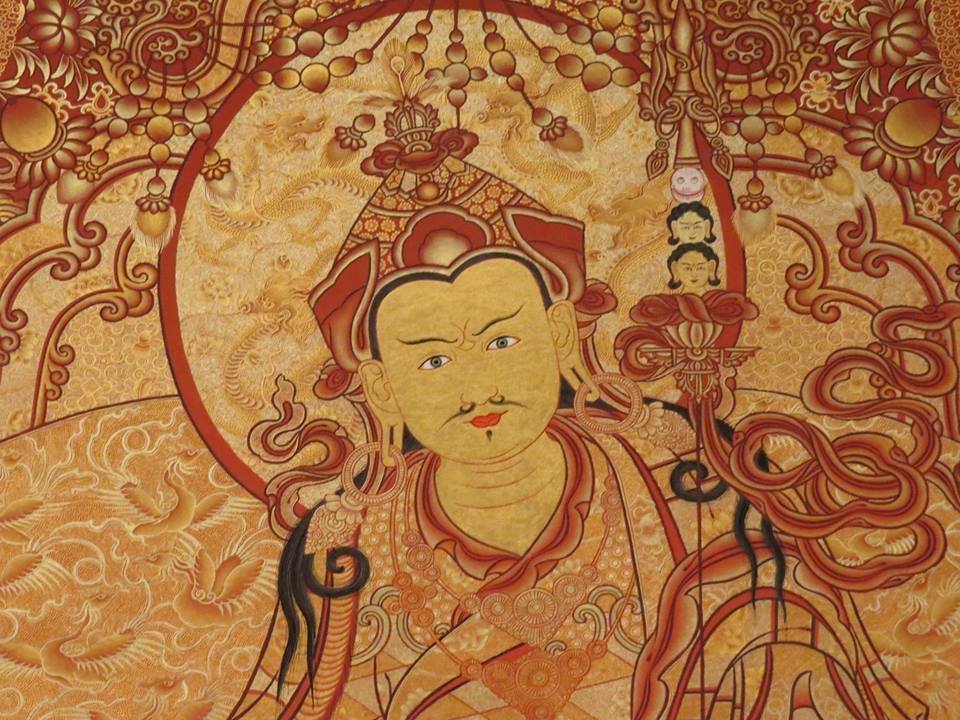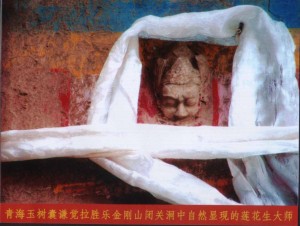
 Story of the Self-Arising Guru Rinpoche Image
Story of the Self-Arising Guru Rinpoche Image
[This was shared by Bardor Tulku Rinpoche at the conclusion of his October 4-5, 2014 teachings.]
This is the story of how that image appeared […] When we were offering the daranis to — I mean, we say filling the statues — of the 25 disciples of Guru Rinpoche, at that time, I composed three supplications: a supplication to Guru Rinpoche; a supplication to the eight forms of Guru Rinpoche; and a supplication to each of his 25 disciples as well as a feast practice, all to be added to the Concise Daily Practice of the Combined Sadhana of the Vidyadhara Guru, in other words, the Daily Guru Rinpoche practice.
And having done so, then, we first recited this at the reopening of the practice site that’s called Chodrak Peak. And the peak of Chodrak, which is above Chodrak Monastery, was the place where a previous life of Terchen Barway Dorje, called the Dharma Lord Sonam Zangpo, had spent most of his life practicing in isolated retreat. He had created that site along with his master Langray Drakpa Gyaltsen.
Now, the retreat facility or hermitage that was built there was largely destroyed during the Cultural Revolution, but part of it, couple of its walls, are still standing. And when we performed this feast practice there, subsequently, this image of Guru Rinpoche began to spontaneously emerge from that wall.
Now, this place is very significant for our lineage because not only was it where the Dharma Lord Sonam Zangpo spent most of his life and practiced, but it’s also where in his later life, as Terchen Barway Dorje, he did intensive retreat for more than three years. He gave it the name Lion Sky Fortress. And it was where he received, in visions, and transcribed his special short lineage of the Six Dharmas of Naropa and the attendant physical exercises, according to the Barom Kagyu tradition. So it is of great significance.
[“Treasury of Eloquence: Songs of Barway Dorje,” Oct. 4-5, 2014. Translation by Lama Yeshe Gyamtso. Transcribed by Linda Lee.]
[Note: Self-arisen image is seen in the inset photo with the kata scarves, not the thangka image depicted above.]
